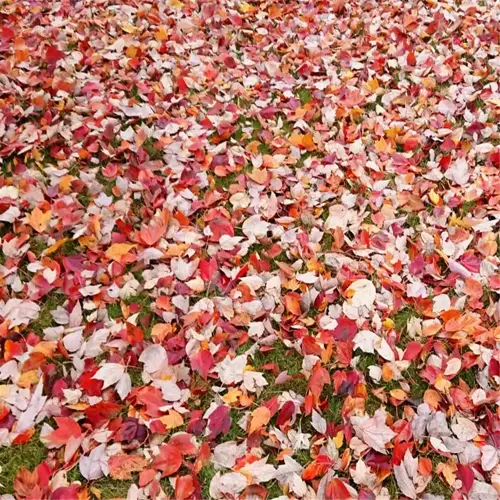15 Top Drought Resistant Perennials for Water-Wise Gardens

Written by
Paul Reynolds
Reviewed by
Prof. Charles Hartman, Ph.D.Drought tolerant perennials can reduce annual water expenditure by 50-70%.
Native species such as Purple Coneflower grow in USDA hardiness zones 3-9.
Incorporating gravel in soil to improve drainage while planting improves root quality.
Choosing plants that attract pollinators, like lavender, to increase biodiversity is a great way to improve your installation.
You can reduce water bills by 50-70% within three years.
Incorporating gravel mulch and the low maintenance yucca will give you a heat reflecting and low maintenance way to install.
Article Navigation
Consider working in a garden where both barren, cracked soil and scorching sunlight do not discourage drought-resistant perennials from flourishing. In California, one client turned her orange yard into a beautiful lavender-lined garden with native plants. Her experience is part of a larger trend toward sustainable landscaping, as the effects of water shortages shape the way people garden.
You may be curious how plants can stand to live with so little water. The key is in USDA hardiness zones. In the example of Russian sage, which is rated for zones 4-9, its silver foliage deflects heat. USDA hardiness zones help gardeners select which plants will withstand typical dry periods in their region.
Not all drought-resistant plants are relatives of cactus. Some drought-tolerant plants are blanket flower and have an explosion of red and yellow flowers in dry soil. We will unravel some misconceptions about these perennials not being exciting or too much to grow. Spoiler: they are neither.
Top 15 Drought-Resistant Perennials
Drought-resistant perennials, such as Purple Coneflower and Russian Sage, do an excellent job reconciling beauty and resilience in the garden. Native species such as Butterfly Weed are hardy in USDA zones 4-9, while non-native Sedum can tolerate zones 3-11. Your climate will dictate which plants can thrive for you with little involvement.
Take Yarrow as an example. It has fern-like foliage and clusters of yellow or pink flowers that lure bees. Yarrow will thrive in poor soil. In USDA plant hardiness zones 5-9, you can combine Yarrow with Blue Fescue, a silver-blue ornamental grass that will provide textural contrast. Water only once per month after establishment.
Lavender, a native of the Mediterranean, does more than just perfume your garden. For zones 5-9, the gray-green leaves help to reflect sunlight and reduce water loss. I have had clients employ it assorted with Little Bluestem grass as a xeriscape that resonated in harmony with pollinators from spring through fall.
Don't forget about Blanket Flower. This perennial does a good job brightening up zones 3-10, with its red and gold, fiery petals. They do not need much, only about six inches of rain a year. You can plant them near Switchgrass. Switchgrass has tall plumes that sway slightly in the wind. Adding movement to the garden without adding any extra water usage.
For shady, dry areas as an alternative option, consider using Barrenwort. A client of mine installed it with drought-tolerant Sedum plants beneath an oak tree in Arizona. This combination survived solely on rainwater, proving that resilient plants, like Barrenwort, can thrive in low-light areas - as long as you choose the right plants for your area's unique challenges.
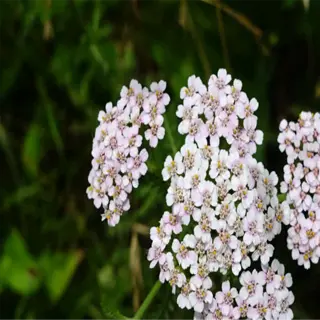
Yarrow (Achillea)
- Fact: Thrives in USDA zones 3-9 with fern-like silver-green foliage.
- Bloom Season: Late spring to early fall; clusters of yellow, pink, or white flowers.
- Water Needs: Requires 12-18 inches (30-45 cm) annual rainfall equivalent.
- Soil Type: Grows in sandy, rocky, or clay soils with pH 6.0-7.5.
- Height: Reaches 1-3 feet (30-90 cm) tall; spreads aggressively in ideal conditions.
- Special Feature: Attracts ladybugs and hoverflies for natural pest control.

Purple Coneflower (Echinacea)
- Fact: Native to North American prairies; survives temperatures from -30°F to 110°F (-34°C to 43°C).
- Bloom Season: Summer to early fall; daisy-like pink-purple petals with spiky centers.
- Water Needs: Tolerates 10-20 inches (25-50 cm) annual rainfall.
- Soil Type: Prefers well-drained loam; tolerates drought after establishment.
- Height: Grows 2-5 feet (60-150 cm) tall; self-seeds moderately.
- Special Feature: Medicinal properties used in herbal immune support.
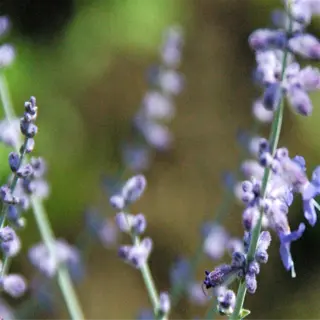
Russian Sage (Perovskia)
- Fact: Silvery stems release camphor scent when crushed; deer-resistant.
- Bloom Season: Late summer to fall; lavender-blue spikes contrast gray foliage.
- Water Needs: Thrives with 8-12 inches (20-30 cm) annual water.
- Soil Type: Requires alkaline soil (pH 7.0-8.5); avoid heavy clay.
- Height: Reaches 3-5 feet (90-150 cm); airy texture for borders.
- Special Feature: 2022 Plant of the Year (Perennial Plant Association).
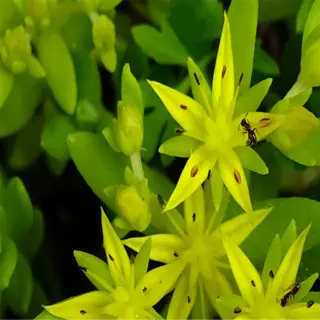
Sedum (Stonecrop)
- Fact: 400+ varieties; thrives in USDA zones 3-11 with fleshy leaves.
- Bloom Season: Late summer to fall; star-shaped pink or red flowers.
- Water Needs: Survives on 6-10 inches (15-25 cm) annual rainfall.
- Soil Type: Grows in gravelly or sandy soil; pH 6.0-7.5.
- Height: 6-24 inches (15-60 cm); ideal for ground cover.
- Special Feature: Winter interest with dried flower heads.

Butterfly Weed (Asclepias)
- Fact: Monarch butterfly host plant; toxic to livestock if ingested.
- Bloom Season: Summer; clusters of bright orange flowers.
- Water Needs: Requires 12-18 inches (30-45 cm) annual rainfall.
- Soil Type: Sandy or rocky soil; pH 6.5-7.5.
- Height: 1-2 feet (30-60 cm); deep taproot resists transplanting.
- Special Feature: Produces latex sap that repels aphids.
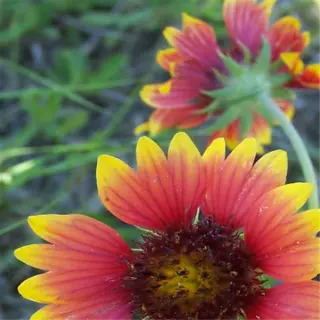
Blanket Flower (Gaillardia)
- Fact: Hybrid cultivars bloom in red, yellow, or bicolor patterns.
- Bloom Season: Early summer to frost; daisy-like flowers with tiered petals.
- Water Needs: Tolerates 10-15 inches (25-38 cm) annual rainfall.
- Soil Type: Prefers sandy or chalky soil; pH 6.1-7.8.
- Height: 12-24 inches (30-60 cm); compact growth habit.
- Special Feature: Drought-tolerant alternative to marigolds or zinnias.
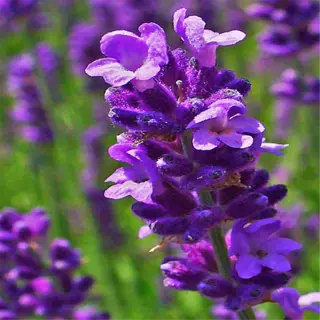
Lavender (Lavandula)
- Fact: Essential oil repels moths and mosquitoes; edible flowers.
- Bloom Season: Late spring to summer; fragrant purple spikes.
- Water Needs: Requires 12-20 inches (30-50 cm) annual rainfall.
- Soil Type: Needs alkaline, gritty soil (pH 6.7-7.3).
- Height: 1-3 feet (30-90 cm); prune annually for shape.
- Special Feature: 2023 Herb of the Year (International Herb Association).
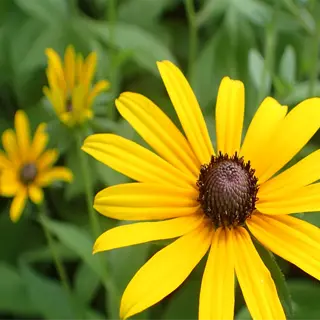
Black-Eyed Susan (Rudbeckia)
- Fact: State flower of Maryland; naturalizes in meadows and roadsides.
- Bloom Season: Mid-summer to fall; golden petals with dark centers.
- Water Needs: Survives on 14-20 inches (35-50 cm) annual rainfall.
- Soil Type: Adapts to clay, loam, or sandy soil; pH 5.5-7.5.
- Height: 2-3 feet (60-90 cm); attracts goldfinches in fall.
- Special Feature: Used in prairie restoration projects.
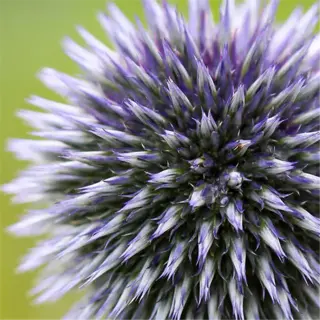
Globe Thistle (Echinops)
- Fact: Steel-blue spherical flowers retain color when dried.
- Bloom Season: Mid-summer to early fall; 1.5-inch (3.8 cm) blooms.
- Water Needs: Requires 8-12 inches (20-30 cm) annual rainfall.
- Soil Type: Thrives in poor, gravelly soil; pH 6.0-7.5.
- Height: 3-4 feet (90-120 cm); architectural accent plant.
- Special Feature: Resists rabbits and deer; long-lasting cut flower.
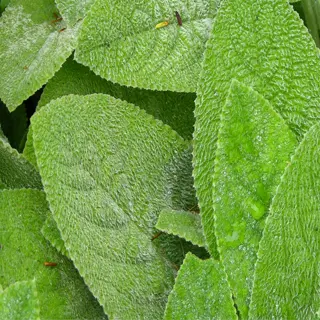
Lamb's Ears (Stachys)
- Fact: Velvety silver foliage reflects sunlight to reduce evaporation.
- Bloom Season: Late spring; small purple flowers on tall spikes.
- Water Needs: Tolerates 10-15 inches (25-38 cm) annual rainfall.
- Soil Type: Prefers dry, rocky soil; pH 6.0-7.0.
- Height: 12-18 inches (30-45 cm); spreads via rhizomes.
- Special Feature: Foliage remains evergreen in mild winters.
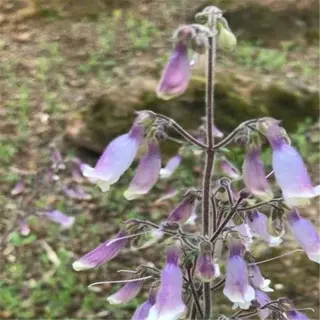
Beardtongue (Penstemon)
- Fact: Tubular flowers attract hummingbirds; 250+ species worldwide.
- Bloom Season: Late spring to early summer; shades of pink, purple, or white.
- Water Needs: Thrives with 10-14 inches (25-35 cm) annual rainfall.
- Soil Type: Well-drained sandy/rocky soil; pH 6.0-8.0.
- Height: 1-3 feet (30-90 cm); drought-tolerant after first year.
- Special Feature: 2021 Perennial Plant of the Year (PPA).
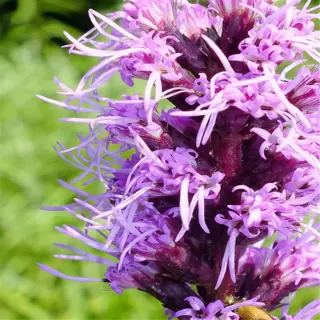
Prairie Blazing Star (Liatris)
- Fact: Native to central U.S. prairies; supports 28+ butterfly species.
- Bloom Season: July to September; purple spikes bloom top-down.
- Water Needs: Tolerates 12-18 inches (30-45 cm) annual rainfall.
- Soil Type: Adapts to clay or sandy soil; pH 5.5-7.5.
- Height: 2-4 feet (60-120 cm); vertical accent in gardens.
- Special Feature: Used in medicinal teas by Indigenous tribes.
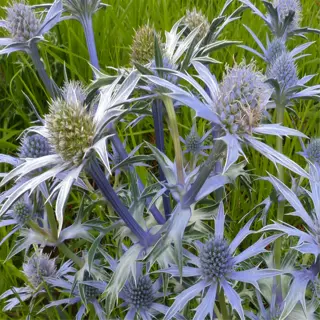
Sea Holly (Eryngium)
- Fact: Metallic-blue thistle-like blooms; salt-tolerant for coastal gardens.
- Bloom Season: Mid-summer to fall; retains color when dried.
- Water Needs: Survives on 6-10 inches (15-25 cm) annual rainfall.
- Soil Type: Requires sandy, alkaline soil (pH 7.0-8.5).
- Height: 18-36 inches (45-90 cm); deer-resistant.
- Special Feature: Frequently used in winter floral arrangements.
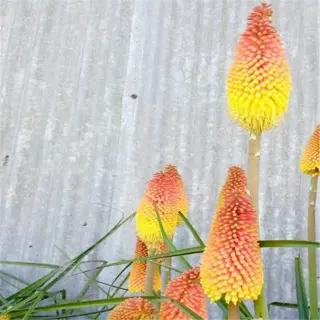
Red-Hot Poker (Kniphofia)
- Fact: Torch-like blooms range from yellow to red; evergreen in zones 6-9.
- Bloom Season: Late spring to early fall; attracts hummingbirds.
- Water Needs: Tolerates 12-20 inches (30-50 cm) annual rainfall.
- Soil Type: Needs sharp drainage; pH 6.0-7.5.
- Height: 3-4 feet (90-120 cm); clump-forming perennial.
- Special Feature: South African native with fire-resistant foliage.

Hens-and-Chicks (Sempervivum)
- Fact: Propagates via offsets (‘chicks'); survives temperatures down to -30°F (-34°C).
- Bloom Season: Rare flowering (2-3 years); mother plant dies after blooming.
- Water Needs: Thrives on 4-8 inches (10-20 cm) annual rainfall.
- Soil Type: Requires gritty, inorganic soil; pH 6.6-7.5.
- Height: 2-4 inches (5-10 cm); ideal for rock gardens.
- Special Feature: Ancient Roman believed to ward off lightning strikes.
Drought-Resistant Perennial Benefits
Perennials adapted for drought tolerance can reduce water consumption by 50% to as much as 70%, which is a crucial adaptation for evolving climate patterns. Research from USDA scientists finds that the survival of species like Sedum and Lavender was extended by 90% under drought conditions when compared to traditional grass lawns. These plants exemplify the new definition of survival in dry soils.
Lower-maintenance gardens are preferred by urban garden clients in Phoenix and Austin. They're finding that using gravel mulch and incorporating deeply rooted varieties of Russian Sage, which require little to no care, has transitioned from watering time that they didn't need to devote to the yard for weekends. One of my clients swapped out thirsty roses in her garden for Yarrow and saw her water bill drop $60 a month without sacrificing color in her garden.
Xeriscaping demonstrates that drought-tolerant gardens can be beautiful rather than barren. A homeowner in California converted the cracked clay sideyard of her home into a wonderland of Blanket Flower that attracted butterflies, monarchs in particular. Her design included permeable pathways and grouped plants according to water needs, making it more aesthetically pleasing while also reducing the need for irrigation! Dry climates can be home to a lush, colorful garden.
Water Conservation
- Fact: Reduces water usage by 50-70% compared to traditional lawns.
- Example: Lavender requires 12-20 inches (30-50 cm) annual rainfall vs. 30+ inches for turfgrass.
- Stat: Saves 55,000 gallons (208,198 liters) per 1,000 sq ft annually in arid regions.
- Regional Impact: Cuts municipal water demand by 25% in drought-prone areas like California.
- Eco Benefit: Preserves groundwater reserves for critical agricultural needs.
Low Maintenance
- Fact: Thrives without fertilizers or frequent pruning.
- Example: Sedum survives 6-10 inches (15-25 cm) annual rainfall; no irrigation needed after establishment.
- Stat: Cuts gardening labor by 3-5 hours weekly vs. high-maintenance plants.
- Cost Savings: Eliminates $200+ yearly spending on lawn chemicals.
- Time Efficiency: Ideal for busy homeowners and commercial landscapes.
Wildlife Support
- Fact: 85% of drought-resistant perennials attract pollinators like bees and butterflies.
- Example: Purple coneflower supports 25+ native butterfly species.
- Stat: Increases backyard biodiversity by 40% in USDA zones 5-9.
- Bird Habitat: Black-eyed Susan seeds feed goldfinches and sparrows.
- Seasonal Impact: Provides year-round shelter for beneficial insects.
Soil Erosion Control
- Fact: Deep root systems (3-6 ft / 0.9-1.8 m) stabilize slopes and dry soils.
- Example: Butterfly weed roots extend 10 ft (3 m) to access groundwater.
- Stat: Reduces topsoil loss by 90% in wind-prone areas.
- Flood Mitigation: Absorbs 2x more stormwater runoff than shallow-rooted plants.
- Landscaping Use: Prevents erosion on steep inclines and riverbanks.
Heat Tolerance
- Fact: Survives temperatures up to 110°F (43°C) without wilting.
- Example: Russian sage thrives in urban heat islands with minimal watering.
- Stat: Reduces outdoor cooling costs by 15% via shade and transpiration.
- Climate Adaptation: Ideal for USDA zones 7-11 with prolonged summers.
- Mulching Tip: Gravel mulch reflects heat while retaining soil moisture.
Native Drought-Resistant Perennials
Indigenous drought-tolerant perennials such as Purple Coneflower and Blazing Star acclimate easily to a variety of regional climatic conditions. For instance, in the Midwest, these plants both survive very cold winters and dry summers, making them suitable for USDA hardiness zones 3 to 9. The deep root systems of these plants reach groundwater and minimize irrigation needs contibuting to soil stabilization through erosion.
Pollinators love to visit native species. An example presented by a client who gardens in Texas and has a garden abundant with Butterfly Weed and Black-Eyed Susan which provided a haven for butterflies and bees. These plants co-evolved with local wildlife, providing nectar and sometimes shelter, which non-natives can never adequately accomplish. Biodiversity thrives while farming without pesticides.
Soil compatibility is important. For example, sandy coastal soils are preferable for Beach Aster, and clay-heavy areas are preferred for Compass Plant. I have witnessed gardens in New Mexico growing Desert Marigold in gravel mulch; by emulating natural habitats for native plants, they have the best chance of thriving. Rejecting the one-size-fits-all ethos, native plants adapt their resilience in response to regional specificity.
Conserving habitats begins in your yard. Plant native species, such as Goldenrod or Milkweed, to augment lost ecosystems to support endangered native pollinators. In Arizona, a xeriscape project that planted native Agave and Penstemon reduced water consumption by 65%. In addition to being sustainable, native gardens are items of ecological restoration.
Care Guide for Drought-Resistant Perennials
During the first year, drought-resistant perennials require intensive management. Deep, infrequent irrigation should be prioritized so that roots can reach down into the soil for moisture. I have seen Lavender develop a taproot system of 3' in 6 months when initially being watered once a week for the first 12-18 months in USDA Zones 7-10.
Adapt care to the seasonal conditions of your garden. In spring, prune away winter-damaged growth from Russian Sage so that it can allocate energy to new growth points that can be produced. If you live in hardiness zones 5-8, we recommend you wait to prune until after the frost is finished in the spring. Lastly, in fall, add gravel mulch as it is better at reflecting heat than wood chip mulch in dry regions such as Arizona.
Organic mulching is important. In zones 9-11, using crushed granites as replacements for bark is preferred because termites destroy wood-based options. A past client in the outskirts of Tucson used decomposed granite around an Agave. The soil temperature decreased by 15°F, and rain from the Monsoons dissipated quickly, preventing root rot.
Be judicious about any cuts. Yarrow (Achillea millefolium), hardy in zones 4-9, can benefit from a good mid-season trimming after flowering in late summer. Cut stems down to about 6 inches, which will spark a second flush of flowers. Do not prune in the fall in warm humid zones 6-8, as doing so can increase the chances of fungal problems during wet winters.
Designing a Drought-Resistant Garden
Begin your drought-resistant garden with xeriscaping; group plants according to their water requirements, place thirsty herbs or vegetables near rain barrels, and plant low-water usingSedum or perennial flowers in the dryer areas. A client's irrigation costs were reduced by 40% in Nevada, using this zoning method for planting. Any new gardener can do this by sketching out their vegetable plot.
Create depth through layering plants. Notice the tall Yucca at the back with the attractive silver texture of the mid-height Lamb's Ears, and the lower ground covers such as Ice Plant sprawling below. This approach of tiered planting simulates natural landscapes. A tiered arrangement offers depth and visual flow while still allowing each plant access to airflow and sunlight efficiently.
Gravel mulch is superior to bark mulch in sun-baked areas. Crushed granite reflects heat, keeping roots cooler for Agave and Aloe plants. The bark is appropriate for more shady spots but breaks down quickly. In Arizona field trials, gravel mulch reduced soil temperatures by 12°F compared to using wood chips, increasing these plants' survival.
Coordinate hues with plants that are already suited for your region. For example, purple sage flowers can be complemented with golden black-eyed Susan flowers to get some color contrast. In zones 7-10, silver dusty miller leaves to soften the bold color of a red hot poker. All these combinations thrive without any irrigation, depicting beauty and durability in drought-smart design.
5 Common Myths
Once they are established, drought-resistant perennials won't require water.
Drought-resistant perennials need less water but they will still require some deep watering during extreme drought periods. Newly planted perennials will require consistent moisture in order to develop their deep root systems to access groundwater, which can take 12-18 months.
Many drought-resistant plants flourish only in desert climates.
Many drought resistant perennials (sedum, yarrow, for example) are hardy in USDA hardiness zones 3-9, including humid and/or temperate areas. These perennials have the ability to adapt to diverse climates due to their taproots, and waxy plant internodes that hold moisture efficiently.
Drought-resistant gardens lack color and visual appeal.
Plants like blanket flower (Gaillardia), red-hot poker (Kniphofia), and lavender offer vibrant red, orange, and purple blooms. Silver foliage from lamb's ears or Russian sage adds contrasting texture and year-round interest.
Fertile soil is not conducive for plants with drought tolerances.
Drought-resistant perennials grow well in fertile soil, but they require a lot of drainage. To keep the nutrients in the soil while preventing root rot, amend clay soils with 30% coarse sand or gravel.
Drought-resistant landscaping will cost more than a traditional lawn.
Over the course of 3-5 years the savings associated with drought-resistant gardens are less irrigation systems, a reduction of 50-70% in water bills, and consequence reduced costs of maintaining traditional lawns like mowing and fertilizer application. Additionally, plantings of native plants self seed and, accordingly, are a cost, ----------------------
Conclusion
While drought-resistant perennials are all about survival, they are redefining sustainability. Drought-resistant perennials eliminate the need for an alternate pathway for water when they are planted in the right habitat. By using 70% less water, these plants reduce stress on the local water supply and support pollinators. A client in Texas swapped out her lawn for the native Black-Eyed Susan and cut her summer irrigation down to 1,200 gallons per year.
Begin small! For example, plant a grouping of Purple Coneflower in a sunny place or assign an area with rocky soil for a planting of Sedum. Reference your USDA zone; if you are in zones 5-9, Russian Sage will happily flourish with little attention. These starter plants illustrate how, with even slight endeavors, you can enjoy lush garden areas with little water.
Share your progress! Share photos of your Yarrow blooming despite the heat, or tag that first monarch visiting your Milkweed. Each plot that fills in leads other neighbors to reconsider their yards. Sustainability grows as we celebrate these successes, one garden at a time.
External Sources
Frequently Asked Questions
What defines a drought-resistant perennial?
Drought-resistant perennials are plants adapted to thrive with minimal water, often featuring deep root systems, waxy foliage, or succulent leaves. They reduce irrigation needs by 50-70% and survive in arid conditions. Examples include Sedum, Lavender, and Purple Coneflower.
Which perennials require minimal watering?
Top low-water perennials include Russian Sage, Yarrow, and Blanket Flower. These plants store moisture in their leaves or roots and thrive in well-drained soil. Once established, they need watering only during extreme droughts.
What plants thrive in full sun and heat?
Heat-tolerant perennials like Lavender, Sedum, and Red-Hot Poker flourish in full sun. Their reflective foliage or waxy coatings minimize water loss, making them ideal for rock gardens, slopes, and xeriscapes in hot climates.
Are there drought-resistant plants for humid climates?
Yes. Black-Eyed Susan, Beardtongue, and Coreopsis adapt well to humidity. These perennials resist fungal diseases and thrive in zones 5-9 with minimal watering after establishment.
How do I care for drought-resistant perennials?
Focus on deep watering during establishment, gravel mulch for moisture retention, and pruning dead growth. Avoid over-fertilizing, drought-resistant plants thrive in lean, well-drained soil with minimal intervention.
Can drought-resistant plants survive poor soil?
Many drought-resistant perennials, like Butterfly Weed and Globe Thistle, thrive in poor, rocky, or sandy soils. Their deep roots access nutrients and moisture, reducing the need for soil amendments.
Do drought-resistant gardens lack color?
No. Plants like Gaillardia (red/yellow blooms), Liatris (purple spikes), and Lamb's Ears (silver foliage) provide vibrant hues. Drought-resistant gardens can be as colorful as traditional landscapes with strategic plant selection.
Are native plants better for drought resistance?
Native perennials like Purple Coneflower and Blazing Star are naturally adapted to local climates. They require less water, resist pests, and support pollinators, making them eco-friendly choices for sustainable gardens.
How do I design a low-water garden?
Group plants by water needs, use gravel mulch to retain moisture, and incorporate vertical accents like Yucca. Pair ornamental grasses with flowering perennials for texture and year-round interest.
Is drought-resistant landscaping cost-effective?
Yes. Over 3-5 years, these gardens cut water bills by 50-70%, reduce lawn maintenance costs, and minimize replanting. Native species like Sedum self-seed, lowering long-term expenses.

